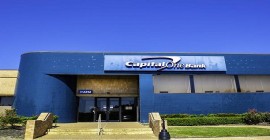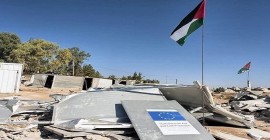“Vipera Palaestinae” Antivenom Costs Millions of NIS per Year

The Palestinian Ministry of Health (MOH) pays around five million NIS every year to Israel to procure the antivenom for the Vipera Palaestinae, a venomous snake found in Palestine. This antivenom is produced in Israeli laboratories. Each snake-bitten person costs the MOH around 24,500 shekels at the very least as a price for the antivenom.

The Vipera Palaestinae is one of the most dangerous snakes in Palestine. According to snake expert Jamal Al-Emwasi, it can be found all over Palestine, and its numbers are constantly growing.
There are several venomous and non-venomous snakes in Palestine belonging to 37 different species. They can be found in mountains, rifts, and agricultural areas.
According to Dr. Jawad Al-Baytar from the Ministry of Health, 95 snakebites were recorded in 2013 in the West Bank and the Gaza Strip, while many cases remained unreported. 47 snakebites occurred in the West Bank, and 48 in Gaza, with a ratio of 2.1 bites for each 100,000 citizens.
“We didn’t receive any reports from Gaza in 2014. However, 57 snakebites occurred in the Wes Bank, with a ratio of 2 bites for each 100,000 citizens,” he adds.

Costly Treatment
According to Al-Emwasi, the treatment for this snake’s bites is very expensive. The antivenom is bought from Israel, who sells it to the Palestinian Ministry of Health. A snakebite victim needs about 3-5 treatments in cases of mild injuries. Earlier, such treatments had not been available at the MOH. However, after exerting a great effort, and due to the increasing numbers of the victims, the treatment was made available. The antivenom’s production requires experts and highly advanced equipment and laboratories.
The cost of one antivenom serum for the Vipera Palaestinae is 4900 shekels, according to Rizeq Othman, the Director of Drug Stores at the MOH. The victim may need more than 20 antivenoms, while the minimum amount needed is usually 5. Consequently, a snakebite victim costs the MOH about 24,500 shekels minimum, without taking into account the expenses of their hospital stay. The number of antivenoms needed depends on the size of the snake and the amount of venom that entered the victim’s body.
Othman also adds that the MOH has been procuring the antivenom from Israel since a few years. The average number of antivenoms bought ranges between 700-1000 per year. This means that the MOH pays an average of 1,500,000 to 5 million shekels to Israel to get the treatment.
The spokesperson of the MOH, Dr. Osama Al-Najar, explains that there is only one factory in Israel that produces this antivenom. This type of snake is different from other snakes found all over the world. Consequently, a specific type of antivenom is required to treat its bites. He also adds that sometimes the number of snakebite victims exceeds the number of treatments available, which forces the Ministry to buy more.
The snake’s venom affects the circulatory and nervous systems, which causes convulsions. One of the main symptoms of a snakebite is a wound shaped like fang marks in the skin, in addition to extreme pain, dizziness, weakness, convulsions, nausea in extreme cases of toxicity, rapid pulse and breaths, swelling and burning at the site of the bite, and skin discoloration.

Other Uses
Al-Emwasi further points out that Israel has excelled in using snake venom in the production of some medications. It is used in creating antibiotics and cosmetics, as well.
The environmental expert, Dawood Al-Haly, confirms the importance of snake venom in the production of medicine. He also emphasizes that we should differentiate between superstitions and logic. Snake venom is used in the production of some kinds of medicine, which is also mentioned in traditional medicine books.





